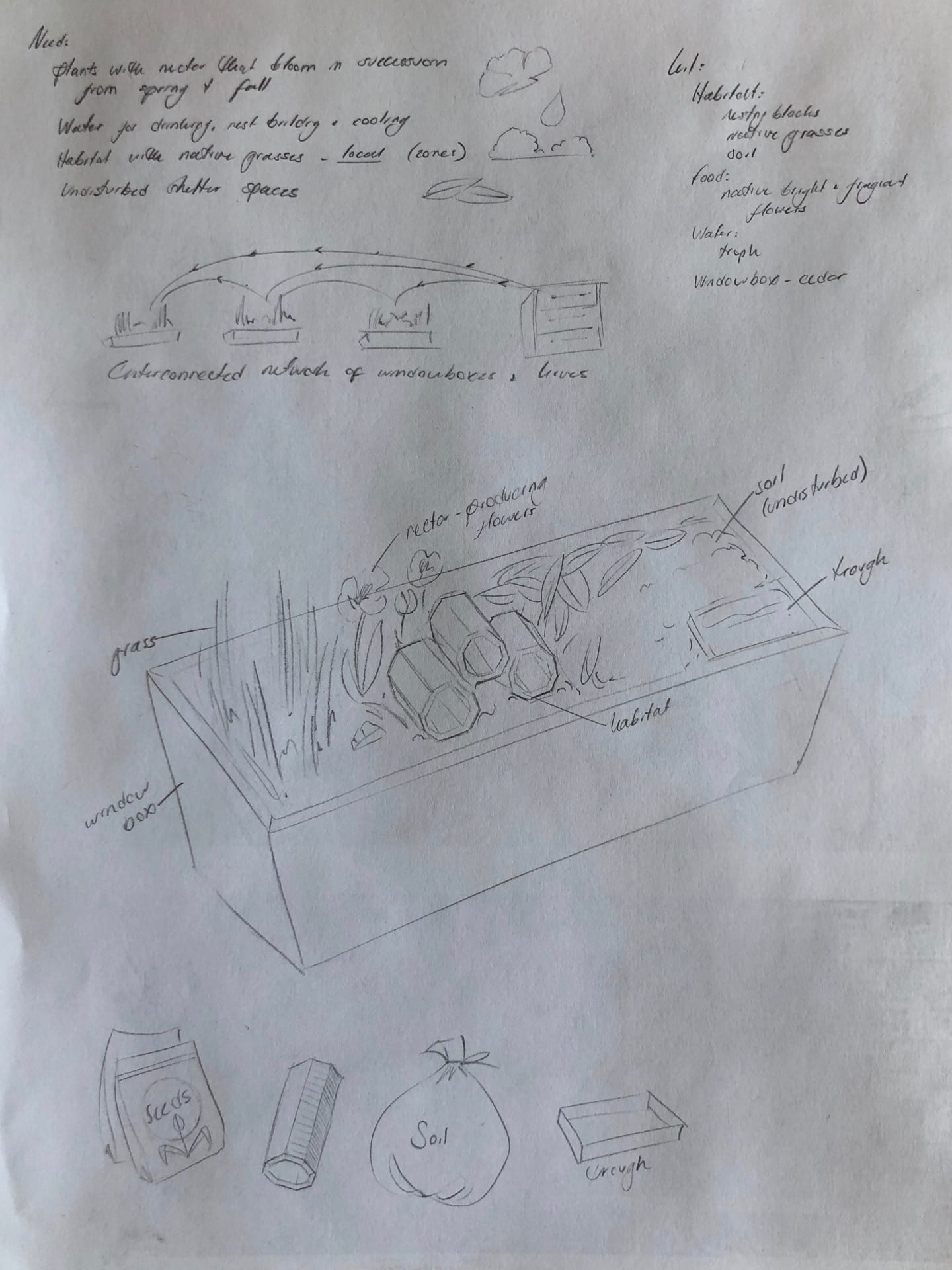– Goal: There is a growing apprehension that the massive systems from which most Americans get their food are at risk of collapsing due to environmental pressures. One major strain on our food resources is “Colony Collapse Disorder”. This refers to the drastic loss of bee colonies both nationally and globally. It has been associated with several causes including new and harmful pesticides, stress-inducing bee transportation, change in foraging habitats, and a myriad of other interrelated and jointly aggravating issues. Beyond just CCD (which only describes a specific set of symptoms experienced by domesticated honeybees), pollinators are at risk on a larger scale. Pollinators include wild bee species, hummingbirds, butterflies, and even bats. While many believe advocating for more beekeeping, especially in urban centers, is the only solution, it can actually harm wild pollinator populations which compete for the same nectar and pollen (Mallinger, et al). The more serious issue is the loss of environments in which pollinators can eat and live. Deforestation, urban development, and agriculture have disturbed a vast portion of the land on which pollinators depend.
– Community justification: This is a significant danger to our food resources. According to a global survey of the role pollinators place in nutrition, in at least four countries surveyed “0 to 56% of populations would become newly at risk of nutritional deficiency if pollinators were removed” (Ellis, et al). This is a relatively conservative estimate in the field. The EPA released a study which indicated at least one third of the food that Americans consume is dependent on pollinators. Without the aid of these species we would lose almost our entire crop industry, putting our food stock at risk and endangering the lives of those who won’t be able to afford the sparsely available fruits and vegetables which depend on pollinators for reproduction. This issue is easier to combat in areas with large pockets of land which can be restored with native wildflowers and undisturbed soil in which these crucial insects and animals can nest. But what can we do in cities where more and more micro-agriculture projects are springing up without the presence of native species to aid in pollination? I’m proposing a window box which provides both year-long food and habitat for wild pollinators.
– Materials/Form: The window box has several key features: one recycled plastic water trough, seeds of two native flower varieties (one for spring-summer bloom and one for summer-fall), native grass seeds, pollinator-friendly soil, and recycled plastic or cardboard tubes for pollinator nesting. The window box itself is made of wood and sealed for rot protection. It’s important to supply flowers which provide nectar during the majority of the warm months, so food is plentiful when insects need it.
– Visualization/Simulation:
– Sustainable: All of the materials of the window box are recycled or sustainably sourced.
– Effect: This miniature ecosystem will help reintroduce pollinators’ natural environment and sources of sustenance, mitigating the habitat loss for which much of the population collapse can be attributed. It will also add more green space to cities which has proven positive effects that go beyond just helping pollinators. They are known to improve human moods and even improve air quality. The influx of micro-agriculture projects in urban areas would also be greatly aided by a pollinator presence.
– Challenges: The challenges will be sourcing the sustainable/ recycled materials, as well ensuring that the plants selected are native, will thrive in shallow soil, and are hardy enough to withstand a city environment.
– References:
Pollinator Push Garden – provides the seeds, soil, and nutrients for growing a small sized pollinator garden
- https://www.gardeners.com/buy/seed-balls-bee-pollinator-gardens/8591768.html
Bee & Pollinator Seed Balls – balls of rolled clay and seeds which can be easily planted, full of flowers which attract bees, not locally-specific
- https://www.prairiemoon.com/pollinator-introduction-kit.html
Pollinator Introduction Kit – a package including a nesting shelter, seeds, and an informational guide
Sources:
https://www.dadant.com/catalog/
https://journals.plos.org/plosone/article?id=10.1371/journal.pone.0189268
https://journals.plos.org/plosone/article?id=10.1371/journal.pone.0114805
https://journals.plos.org/plosone/article?id=10.1371/journal.pone.0114805#pone.0114805-Eilers1
https://www.epa.gov/sites/production/files/2016-08/documents/vicki_wojcik_6-23-16.pdf

